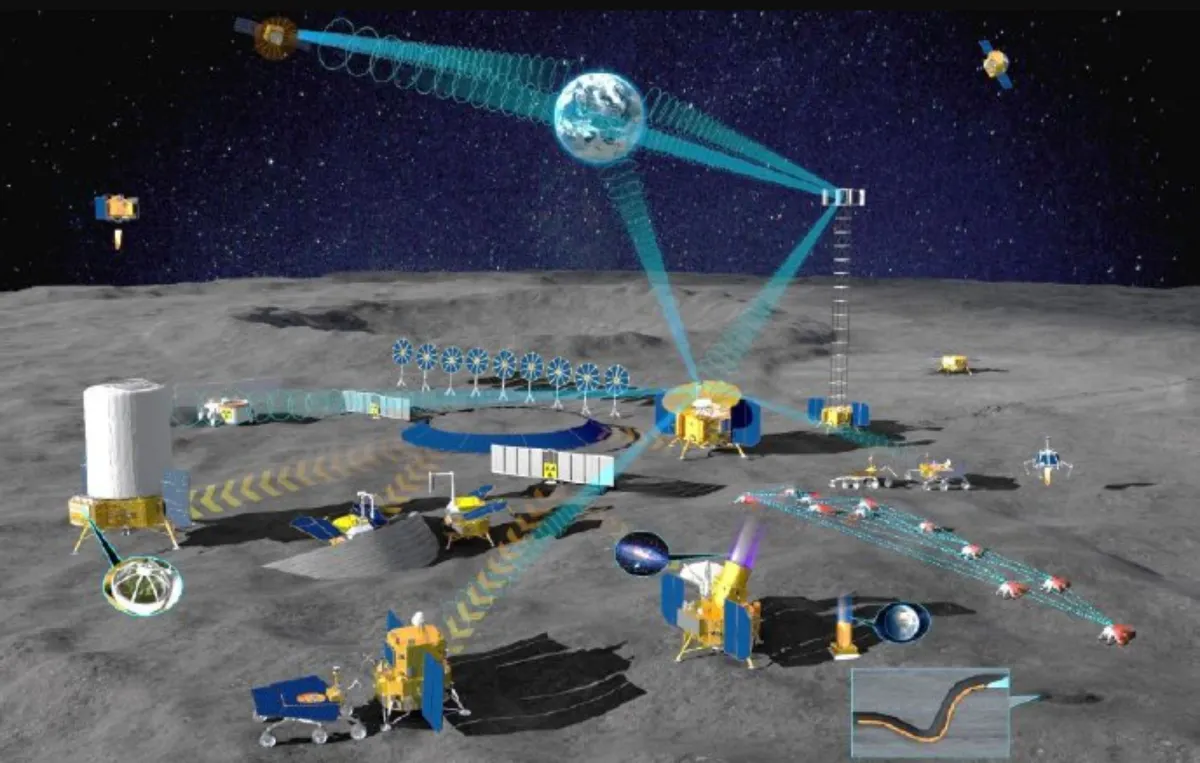China wants the ILRS moon colony to engage 50 nations.
HELSINKI As it continues to seek partners for its ILRS lunar south pole base program, China hopes to collaborate with 50 nations.
In advance of International Moon Day on July 20, Wu Weiren, chief designer of China’s lunar exploration program, said to China Global Television Network (CGTN) that “we are open and welcome international
cooperation from all countries, including those countries from the Global South, emerging BRICS countries, as well as Western countries.”
The request was made just a few days after NASA decided to shelve the robotic lunar rover mission VIPER, which was designed to look for ice near the moon’s south pole.
By 2035, China hopes to have a rudimentary International Lunar Research Station (ILRS) built, and by 2045, an expanded station.We have agreements with over ten nations and close to thirty foreign research
institutes thus far. In order to jointly establish our worldwide lunar scientific research station, we aim to collaborate with 50 countries by inviting 500 foreign scientific research institutions and 5,000 foreign
scientific research professionals, according to Wu.Ten nations are reported to have expressed interest in joining China and Russia in the project. These include, most recently, Kazakhstan; they are Venezuela,
Belarus, Pakistan, Azerbaijan, South Africa, Egypt, Nicaragua, Thailand, and Serbia. It is believed that Turkey submitted a join application. Meanwhile, memorandums of understanding on the ILRS have been
signed by a number of colleges, businesses, institutes, and regional organisations.The persistent diplomatic efforts do point to a postponement of the project’s initial plans to bring in founding partners
In 2023, Chinese officials declared their intention to create the International Lunar Research Station Cooperation Organisation (ILRSCO) in the latter part of the same year. The establishment of the
organisation, which would oversee and plan the building of the ILRS lunar outpost, has not yet been disclosed.
China’s activities have mostly mirrored its broader diplomatic initiatives, with an emphasis on the Global South. By extension, subnational diplomacy has also drawn more nations into the program.
In the most recent instance, Wu’s Deep Space Exploration Laboratory (DSEL) in China and the Hungarian Solar Physics Foundation inked a Memorandum of Understanding (MoU) this month.Late in May, Bahrain, a party to the Artemis Accords, inked a deal with China pertaining to lunar and deep space exploration.
It was not made clear that there was consensus on the ILRS. Nonetheless, Bahrain and Egypt will work together to construct a hyperspectral imager as part of the Chang’e-7 lunar surface material identification payload.
Launched in 2026, the Chinese ILRS precursor lunar south pole mission is planned.Peru, another party to the Artemis Accords, participates in the ILRS through the Asia-Pacific Space Cooperation Organisation (APSCO).
China and Russia jointly unveiled the ILRS in June 2021. China has since assumed the initiative in diplomatic relations in the wake of Russia’s invasion of Ukraine. With the recent success of the Chang’e-6
mission and the loss, it is also leading at the mission level.Prospects for Western participation in ILRS appear to have ceased with the invasion of Ukraine. Because of Russia’s involvement in the ILRS project,
the European Space Agency has declared it would not participate.
Similar restrictions and policies that forbid collaboration with Russia are in effect in the United States. Furthermore, the Wolf Amendment, a clause included in NASA appropriations bills, severely limits the
agency’s capacity to interact with Chinese businesses.
ILRS: Resource development and the South Pole
Wu also offered some further context on the destination and objectives of the ILRS programs.
“We are getting ready to construct a lunar scientific research outpost at the moon’s south pole. Together with an orbiting station and a lunar surface station.According to Wu, the ILRS will “enable scientific exploration and resource development.”
Later this decade, China is getting ready for two precursor missions, called Chang’e-7 and Chang’e-8. These will test in-situ resource utilisation technology and map and survey the lunar south pole for resources. Numerous foreign partners will be involved in both missions as well.
A tiny spacecraft on Chang’e-7 will probe areas that are always in shadow to see if water ice is present. The primary goal of the VIPER mission was this.
China plans to build a permanent lunar outpost with five missions to create infrastructure, including communications and power. Prior to 2030, China also hopes to deploy astronauts to the moon.




